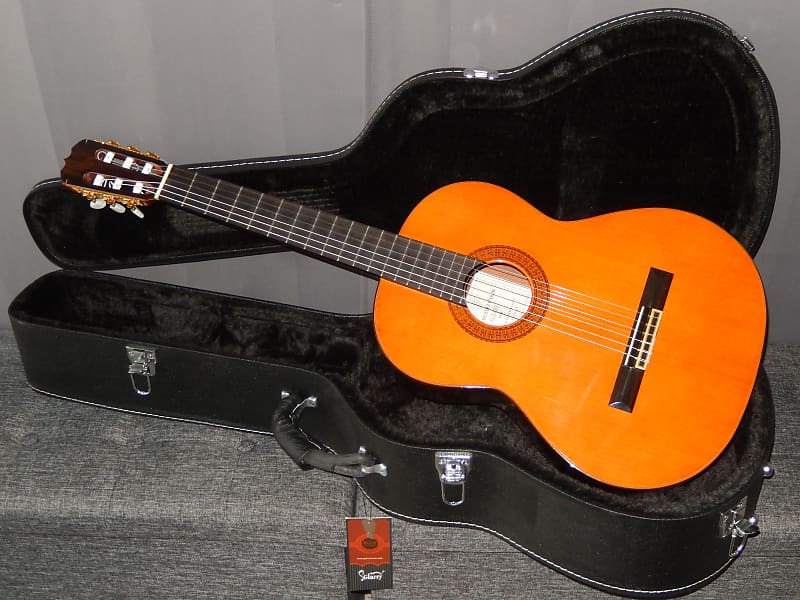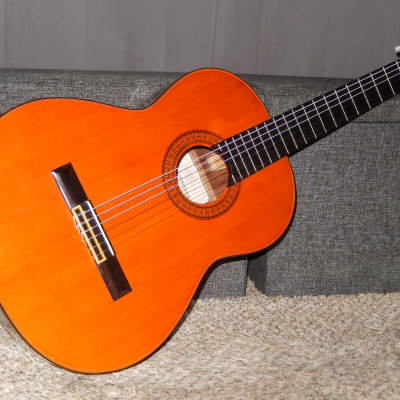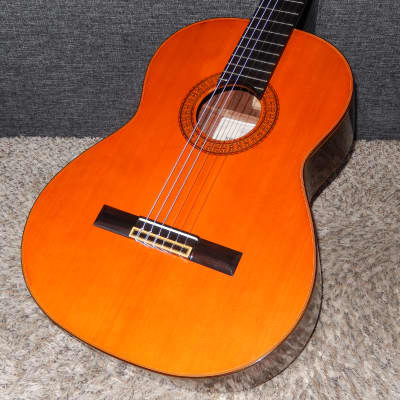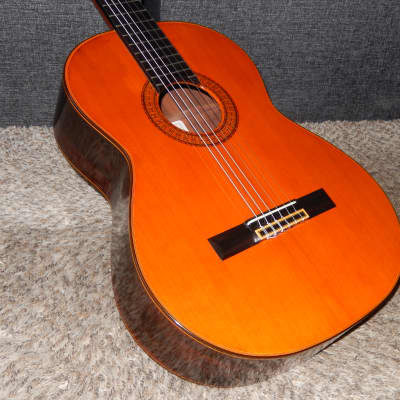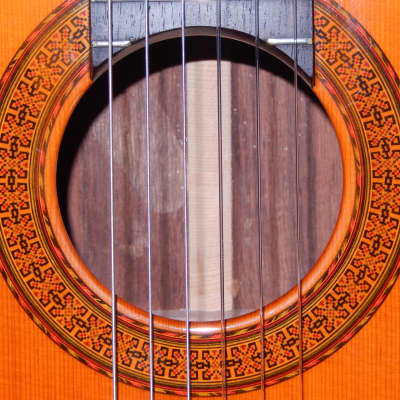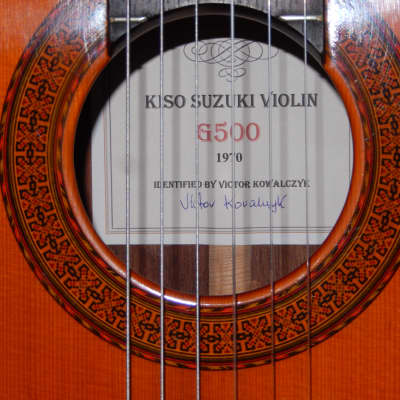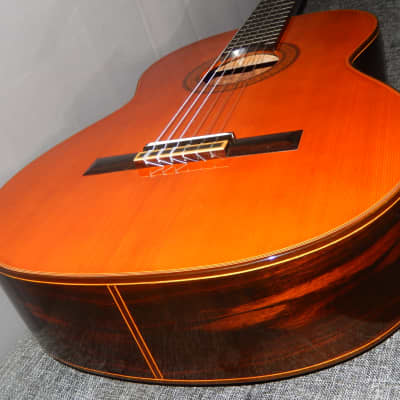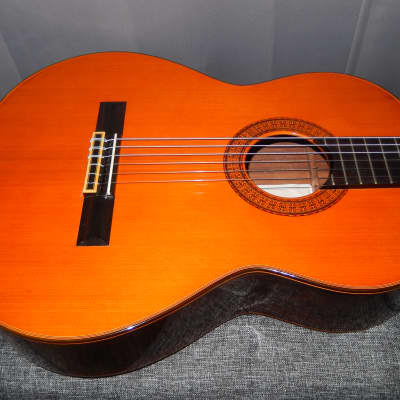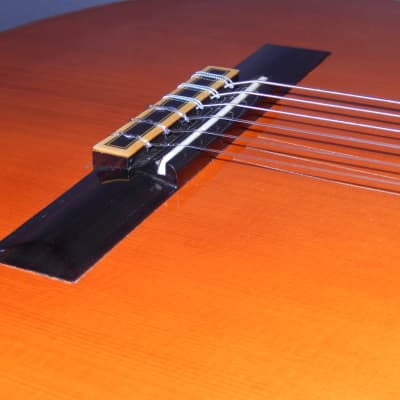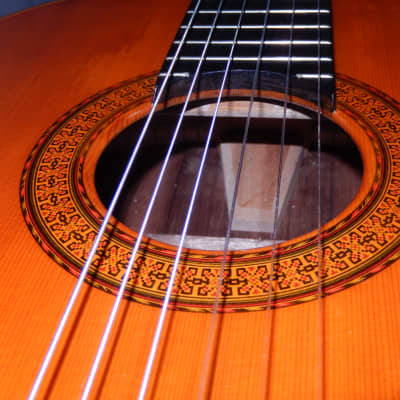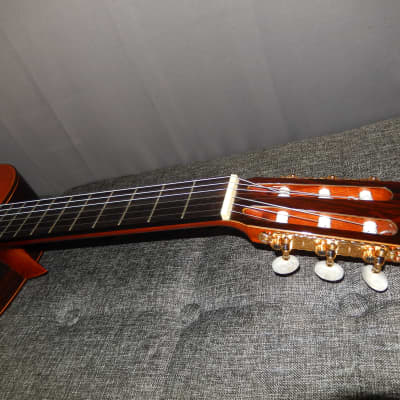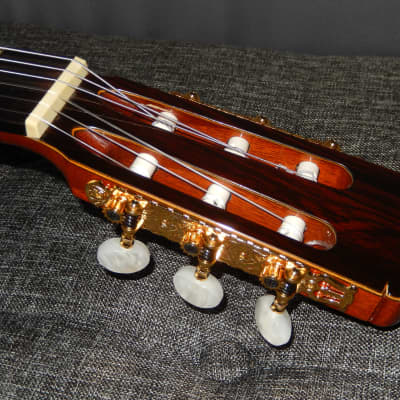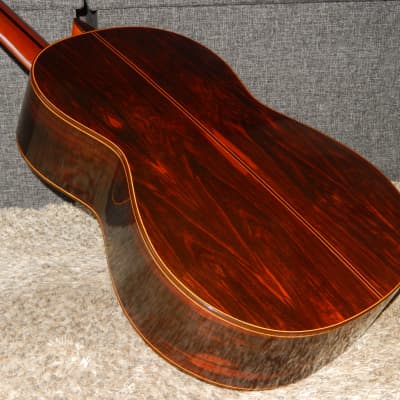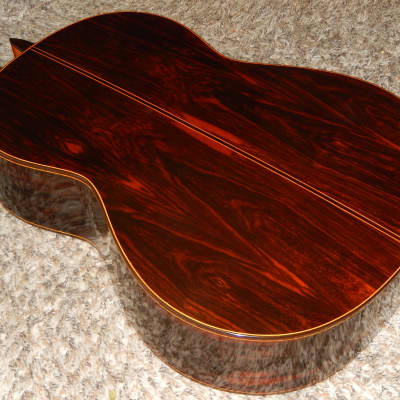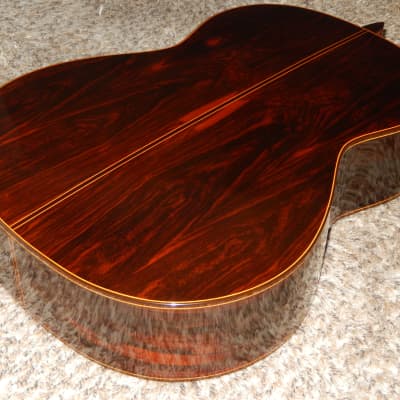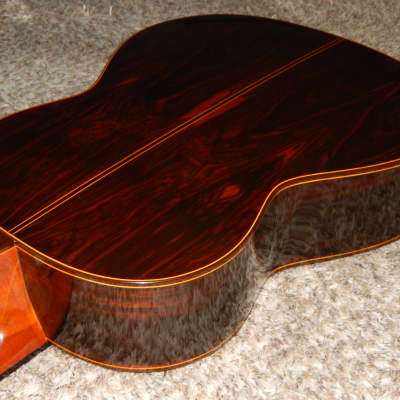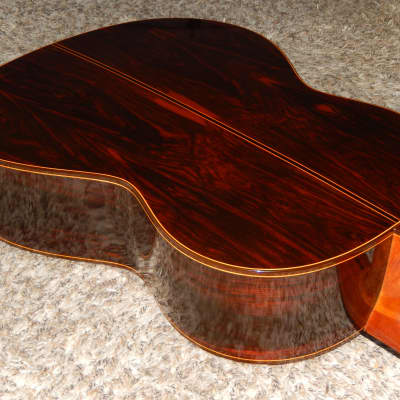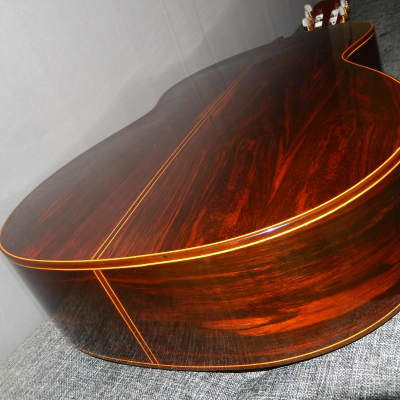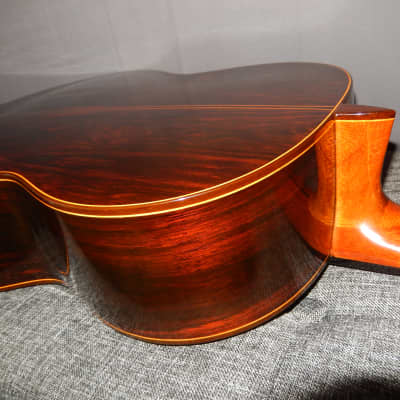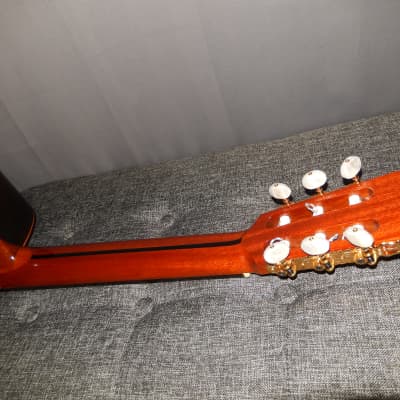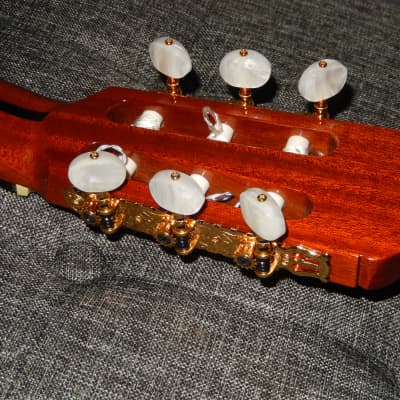Several hundred guitars I have sold in the past are presented at Facebook.com/Victors.Guitar.Library.
Kiso Suzuki Violin G500
This wonderful guitar was made by Kiso Suzuki Violin around year 1970.
For the lack of original label, I have installed my own label as “certificate of its authenticity”. Sceptics are invited to look at my old Reverb listing with exactly the same model.
https://reverb.com/item/35029430-made-in-1970-kiso-suzuki-violin-ng500-finest-grade-classical-concert-guitar
Masakichi Suzuki began making violins in 1887. He quickly established a reputation for making very good instruments. He founded Suzuki Violin Factory in 1900 in Nagoya, Aichi prefecture, and was the first person to open a company mass-producing violins. Passionate about making a range of instruments, Suzuki made a few guitars in the early 1900s. However serial production of Suzuki Violin guitars started in 1951. In the meantime, right after II World War Masakichi’s company was split into 2 entities: old Suzuki Violin (also called Nagoya Suzuki Violin) and Kiso Suzuki Violin located in small town of Kiso in Nagano prefecture. Both companies were managed by Masachichi’s sons. Kiso Suzuki Violin Co. went bankrupt in 1987. Nagoya Suzuki Violin still makes violins and mandolins but stopped making guitars in 1989. Suzuki Violin guitars are very popular all around the world. Although greatly underappreciated, many of them are of very high quality.
The instrument you are looking at is of the highest quality among Japanese made vintage classical guitars. It is one of the best sounding Japanese made guitars I ever had in my hands. Its greatness is only matched by Special model K3 made by Seiji Shinano in mid 1960s, Angel 602 made by Osamu Sakamoto in early 1970s, Seiji Inaba No30 made in 1976 and Yukinobu Chai No50 made in 1980.
I know that many of you will find it very hard to believe, but truly the highest class Japanese classical guitars were made by not famous luthiers and many of them were not “all solid woods” construction. Many of these finest guitars had solid tops, while backs & sides made from “non-solid” Brazilian Rosewood plates.
To recognize the true greatness of this fine instrument you first need to visit “highest end” guitar stores in your area and try their most expensive instruments. With such experience you may agree that guitar This this G500 guitar can easily compete with many $15000+ “hand made in Spain” instruments just as it easily challenges Yamaha GC70 that I have for sale, and which is currently one of the most expensive Japanese made guitars,
Every luthier and most experienced players know that the louder the guitar the lower is its note clarity & separation. This guitar has it all: high volume, superb response, great depth, plenty of warmth and sweetness, yet with quite crispy trebles, exceptionally high level of note clarity & separation, “almost never ending” sustain, great level of transparency and tonality “out of this planet”. Even the most demanding player will be amazed by its gorgeous sound. Only a truly talented poet can describe all its tonal beauty.
This guitar remains in perfect working and “practically mint” cosmetic condition. The only cosmetic flaws are a few very light rubbing marks on its back, all visible only at certain angles and from very close distance. Because original tuners were very hard to turn, they were replaced with brand new Gotoh set.
The construction of this guitar is based on Jose Ramirez blueprints and enhanced by Suzuki Violin luthiers. During the 1960s and early 1970s Jose Ramirez was making the same construction guitars and selling them at prices equal to $15000 today. Many Japanese luthiers were using the same blueprints. Double backs and/or double sides greatly reduce the effect of damping of the sound by the player’s body. The sound of such guitars is ultra-rich and greatly “amplified” at the same time.
Specifications:
Top: High Grade Solid Cedar/ Ramirez style bracing/cashew lacquer
Double Sides: 2 separate plates of Figured Brazilian Rosewood “laminates”/cashew lacquer
Back: Figured Brazilian Rosewood “laminates”/cashew lacquer
“Laminated” is quite unfortunate term regarding Japanese made guitars. In recent years guitar makers around the world adopted new term "semisolid" that more precisely describes construction of such plates. These plates were made from 2 layers of solid wood glued together with natural resins. They were made so well that they performed as good as solid woods while being far less expensive in guitar production and far more resistant to cracking in regular use.
Neck: Mahogany
Fingerboard: Ebony
Scale: 652 mm
Nut width: 52 mm
The current action is set to 3.30 mm under E6 and 2.80 mm under E1mm, just because it was possible. The second saddle sets this action at 4.00 mm E1 and 3.50 mm E1. The final setup is up to you.
The guitar will be shipped in brand new Geary hard shell case.
Real Value of Japanese Vintage Guitars
The key to understand value of vintage Japanese guitars is to acknowledge galloping devaluation of Japanese yen in 1960s & 1970s. This devaluation was somewhat slower in 1980s. The best measure of this devaluation is Starting Yearly Salary of Japanese College Graduate (SYSJCG).
SYSJCG in in 1965 was 19 600 yen, in 1969 – 34 600 yen, in 1970 39 200 yen, in 1972 – 62 300 yen, in 1975 79 200 yen, in 1977 85 200 yen and in 1980 - 100 000 yen.
During 1960s and most of 1970s model numbers of Japanese guitars were strictly interconnected with their prices in Japanese yen. In late 1970s and during following decades model numbers were no longer strictly associated with their prices. Many Japanese guitar makers introduced model names instead of model numbers. Others were still using model numbers with addition of letter abbreviations or other symbols.
The best and only logical approach while evaluating real value (real grade) of vintage Japanese guitar is to compare its price in Japanese yen with SYSJCG during the year guitar was made.
Any guitar priced 100 000 in 1970 (labelled usually as No10) would be priced 200 000 yen in 1975 (relabeled to No20 or 2000), 300 000 yen in 1977 (labelled as No3, No30 or 3000). Starting in 1977 Masaru Kohno introduced his model No50 priced at 500 000 (skipping theoretical model 40). Soon other famous Japanese luthiers did the same. By 1983 Kohno started using model names instead numbers and was raising their prices as he was pleased. Naturally soon other Master luthiers did the same.
Knowing all of that, you can bet on that Masaru Kohno No50 made in 1982 is practically the same quality as Kohno No15 made in 1972, or Kohno no20 made in 1975 or Kohno No30 made in 1977. I know it for a fact.
The lowest grade models currently made by Matsuoka workshop are M75 and MH75. They are commonly considered as “beginner guitars”. Matsuoka model M30 made in 1973 is simply far, far better instrument. It is naturally better than model M50 made in 1977, model 80 made in 1982 or model M100 made in 1990. At present, the highest grade Matsuoka models are M300 and MH300. They absolutely stand no chance in competition with model M150 made in 1975… or model M200 made in 1977.
It is very important to mention that if modern era luthiers are using 40 years old woods to make a classical guitar, its price is at least $8000.
